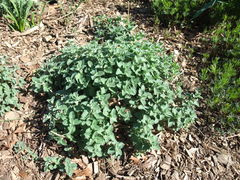Talinum paniculatum: Difference between revisions
Jump to navigation
Jump to search
No edit summary |
No edit summary |
||
| Line 18: | Line 18: | ||
|min_zone=9 | |min_zone=9 | ||
|max_zone=10 | |max_zone=10 | ||
|image=TalinumPaniculatumKingswoodGold.jpg | |image=TalinumPaniculatumKingswoodGold.jpg | ||
|image_width=240 | |image_width=240 | ||
Revision as of 12:41, 18 April 2010
| Talinum paniculatum subsp. var. | Jewels of Opar | |||||||||||||||||||||||||||||||||||||||||||||||||||||||
|---|---|---|---|---|---|---|---|---|---|---|---|---|---|---|---|---|---|---|---|---|---|---|---|---|---|---|---|---|---|---|---|---|---|---|---|---|---|---|---|---|---|---|---|---|---|---|---|---|---|---|---|---|---|---|---|---|

|
|
| ||||||||||||||||||||||||||||||||||||||||||||||||||||||
| ||||||||||||||||||||||||||||||||||||||||||||||||||||||||
Talinum paniculatum, sometimes known as Jewels-of-Opar or Flameflower, is a succulent subshrub native to North America and Central America. It bears tuberous roots and panicles of flowers and produces tiny, jewel-like fruits.
The common name name is apparently taken from the title of a novel by American writer Edgar Rice Burroughs, Tarzan and the Jewels of Opar.
Cultivation
Propagation
Pests and diseases
Varieties
Gallery
-
photo 1
-
photo 2
-
photo 3
References
External links
- w:Talinum paniculatum. Some of the material on this page may be from Wikipedia, under the Creative Commons license.
- Talinum paniculatum QR Code (Size 50, 100, 200, 500)
